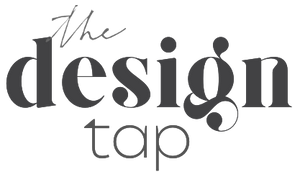A Guide To Understanding the Differences Between Modern and Contemporary Design
What is language but an utterance of words that form a meaning upon translation? Words often offer different ways to say the same things. For example, a seat can also be a rocker, a chair, a hassock, a throne, and a chaise lounge. Within the complex English language that we use to communicate daily, words share meanings but are nonetheless un-substitutable in context.
If you were to search through a thesaurus, you would discover that the words “contemporary” and “modern” are verifiably synonymous. Nonetheless, within the clear-cut context of interior design, these words are not entirely interchangeable. Each term relates to the present by definition, yet each carries inherent meaning beyond their coupling. You cannot mistake a part of that definition for the entirety of the whole.
Modern and contemporary designs have similar aesthetics, but their decorating nuances aren’t the same. The confusion lies in their common favoring of simplistic design elements. We’ve compiled a guide to understanding the differences between modern and contemporary design to provide greater clarity on them. As you read on, think of this sleek duo of design styles as fraternal twins instead of carbon copies.
Modern Design: A Specific Style and Eon
Modern design refers to a specified period in the recent past. This time encompasses the early-mid twentieth century, particularly the 1920s to the 1950s. This style is the very definition of classic and timeless, as it is something that never changes. Interiors that focus on a modern aesthetic create snapshots capturing and eluding to an era’s collective mood and style.
One of the most recognizable styles of modern design is mid-century modern. Within interior design, mid-century modern showcases the beauty of simplicity and the uncluttered sophistication of function over form. With minimal decoration, clean lines, and an embrace of open concepts, this movement showcases the greatest aesthetics that the past has to offer. Nothing is outdated about its interior visuals, which have deep roots in Greek and Scandinavian design. Modern design distinguishably reflects a straightforward approach to one’s interiors.
Contemporary Design: Ambiguous Style Collections
In contrast, contemporary design is all about the present twenty-first century. As in, right here and right now. Contemporary design does not refer to a particular period or a specific style. Instead, it is something ever-changing and constantly evolving to reflect what is popular in present-day interiors. Essentially, contemporary design is fluid. This movement exhibits current trends and happenings within the design world without a singular dominant style. Therefore, contemporary design is less definable, as it simultaneously speaks to the moment while beckoning in future changes. Those who choose to incorporate it in their interiors can easily play around with concepts, conventions, structures, forms, and fresh ideas.
As the seasons come and go, the nuances of this style can take on new formats and arrangements for expression. Many of today’s contemporary designs primarily revolve around modernism, globalism, sustainability, energy efficiency, and eco-friendliness. Some designers create homes and buildings from the outside with astonishment in mind. Either way, contemporary styles have an influential “wow factor” that you can’t help noticing at first glance. At present, this style most often incorporates refined and sleek looks, organic silhouettes, natural patterns, and neutral tones.
Elements of Modern Design Concepts
Next, in our guide to understanding the differences between modern and contemporary design, we’ll take a closer look at a few mainstream elements of modern interiors. Once again, this distinct style has a focus on the value of simple form and function. Traditionally, good modern design is form following function in organic contexts.
Open, airy interiors help to create a sense of balance and harmony within a space. Other elements include minimal details and sparse color. This restricted use of color is purposeful, as it allows designers to add pops of boldness for visual interest. Modern design color choices generally stick to earthier hues and supplement these with warm shades of green, blue, rust, or brown to enhance the functional appeal of the interiors.
Elements of Contemporary Design Concepts
Since contemporary design is often difficult to pin down, you never know quite what you’ll see with its décor pieces. Generally, this design notion makes use of industrial-inspired elements to complement furnishings and accessories. As such, glass, metal, and stone materials dominate. Functional accessories are not necessary for contemporary interiors. Instead, decorative pieces tend to showcase aesthetic principles with a predominant focus on form over function as well.
Other elements in contemporary design include stark walls that dramatically provide a bolder quality to interior spaces. Besides foundational black and white hues, colors are often bright or bold. A wide range of global or artsy Art Deco influences provides distinctive but basic forms. Contemporary lighting fixtures highlight certain elements or serve as decorative pieces themselves.
Again, these characteristics may change with time since contemporary has no fixed attributes. Consider the dated trends of shag carpets, dusty pastels, tile countertops, wood paneling, plaids, avocado green and orange, and wallpaper borders. Someday soon enough, today’s contemporary design will become considerably outdated. At that time, a new contemporary style will exist in its place.
Furniture Styles: Notions of Space and Time
Within the realm of furniture, both modern and contemporary designs revolve around exposed, hard components. Furnishings with exposed legs and surfaces of various materials are primarily popular. That said, specific designs and artistic touches from periods of history maintain a lasting effect on today’s furniture designers. Modern and mid-century modern furniture is an undying hit for differentiating interior spaces. Individuals can choose from a slew of looks that offer clear-cut aesthetics, sleek lines, and geometric shapes.
Visit ShopDesignTap for state-of-the-art furnishings designed for contemporary and modern styles alike. Our curated collections offer fresh perspectives on classics with clean lines and edges, such as our modern and contemporary chest of drawers. Whether you have your eye out for simple symmetry or unique geometry, you can surely discover a distinguished treasure with one of our luxurious pieces. Browse by your favorite style today to add a lasting addition to your home for the years to come.




Leave a comment